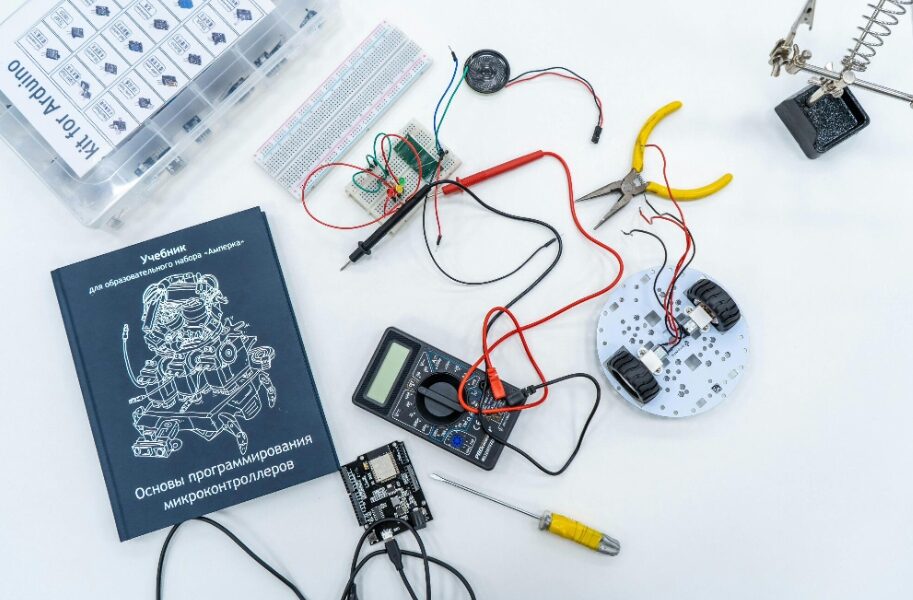Getting Started with Your First Robotics Starter Kit

Have you ever wondered how robots come to life from simple parts and wires? The world of robotics might seem complex, but it often begins with something small, a robotic starter kit.
These kits give beginners a hands-on way to understand how machines think and move. With the right guidance, anyone can create something remarkable.
Robotics isn’t only for engineers or experts. It’s a gateway for problem solvers, creators, and curious minds. By reading this guide, you’ll gain the confidence and know-how to begin building and coding your own robot.
Understanding What a Robotics Starter Kit Is
As an introduction to mechanical and programming ideas, a robotics starter kit is a set of parts. Parts that can be put together to make a working robot are usually included.
People who want to learn can use common kits, whether they are students, hobbyists, or just plain curious. Using these kits to learn by doing makes complicated ideas easier to understand. Each kit teaches you how to use both hardware and software together.
It’s the objective to create a robot that can do basic tasks. For learning how automation and control systems work, this is the essential information. You can learn a lot about modern engineering by using your first robot once you’ve built it.
Key Components Included in Most Starter Kits
A typical kit contains a controller board, which acts as the robot’s brain. It also includes motors, wheels, and sensors to help the robot move and respond. Wires and connectors link everything together, allowing communication between the parts.
Many kits include a battery pack for power and a chassis to mount components. Some advanced kits come with cameras or infrared sensors. Manuals or online guides usually help users assemble and code their robot.
The variety of parts teaches basic mechanics and circuit design. Every piece in the box plays an essential role in bringing the robot to life.
Choosing the Right Robotics Starter Kit for You
Selecting the right kit depends on your age, interest, and skill level. For beginners, simple kits with pre-drilled parts and basic programming are ideal. Intermediate learners can explore kits with open-source coding platforms.
Those interested in competitions may look into an FTC starter kit for practical and educational challenges. Always check whether the kit includes all the tools needed for assembly.
Some kits focus on mechanical construction, while others emphasize programming. Choose one that matches your learning goals. Reading reviews and watching tutorials can help you decide which brand offers reliable support.
Setting Up a Workspace for Building
Before starting, it’s wise to prepare a clean and organized workspace. A sturdy table with good lighting helps you see small parts clearly. Keep tools like screwdrivers and pliers within reach.
Store small screws and nuts in containers to prevent loss. Avoid clutter, as it can cause mistakes during assembly.
Follow all safety guidelines included with your kit. If using soldering tools, ensure proper ventilation. Having a focused and safe environment makes building more enjoyable and productive.
Step-by-Step Assembly: Bringing the Robot Together
First, put all the parts together the way the manual says to. Find each piece before you start putting it together. Carefully attach the motors to the chassis to make sure they are lined up correctly.
Safety-connect wheels and other moving parts. Put the sensors in the right places and make sure the wiring isn’t loose. The electronic parts should be connected to the control board once the frame is complete.
Before turning on the power, check the connections again. If you carefully follow the steps, you will end up with a stable robot that is ready to be programmed.
Understanding Basic Programming for Robotics
Programming is what gives a robot its intelligence. Most starter kits use beginner-friendly programming languages such as Scratch, Python, or C++. The software allows you to write simple commands that guide robot movement.
For example, you can make the robot move forward, turn, or detect obstacles. Many kits include preloaded examples to help users learn faster. The code runs through the controller board, translating digital instructions into mechanical actions.
Over time, programming helps users understand logic, loops, and sensors. Learning to code your robot turns theory into real-world problem-solving.
Testing and Troubleshooting Common Issues
Once the robot is assembled and programmed, it’s time to test it. If it doesn’t move, check that all connections are tight and batteries are charged. Loose wires or weak power often cause malfunctions.
If the robot behaves oddly, review your code for errors. Sometimes a missing line of code or a wrong command can cause problems. Always test in a safe, open area to prevent damage.
Make small adjustments and observe how they change the robot’s behavior. Troubleshooting is part of the learning process. It sharpens patience, accuracy, and problem-solving skills.
Expanding Your Skills with Add-Ons and Modifications
Once you’ve made your first robot, look for ways to make it better. You can add sensors, arms, or extra wheels to a lot of kits. You can learn more about advanced engineering principles by upgrading parts.
Trying out new attachments makes you more creative and curious. Some students hook up more than one robot so that they can work together on projects. The changes you make to your robot teach you how to be flexible and creative.
You will learn how small changes can have a big effect on performance as a whole. With each new upgrade, you get a little better at robotics.
Learning Through Practice and Community Support
You can move along faster if you join a robotics club or an online forum. Students often share tips, code snippets, and ways to fix problems. You get better at what you do when you compete and face challenges.
There are many communities with resources for learning more. Working with other people teaches you how to work together as a team. You can also discover how robots are planned and made by experts.
Having the help of a community keeps you interested. Your trust in robotics grows stronger with each project.
Robotics Starter Kit: Beginning Your Robotics Journey With Ease
The robotics, starter kit lets you be creative and investigate. While parts are put together and coded, more about how machines think comes to light.
To enjoy complicated technology, kits make it easier to use. It teaches kids how to build, use logic, and solve problems.
Curiosity, patience, and accuracy are the keys to success. Making progress is easy and fun when you practice regularly. Building robots is a good idea.
Did you like this guide? Great! Please browse our website for more!





